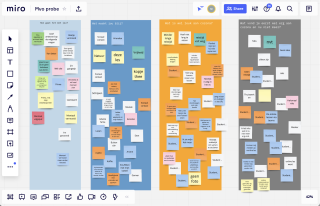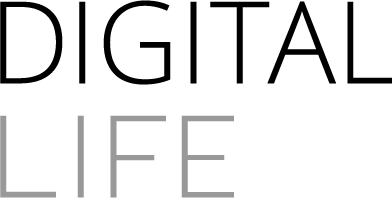Students deploy toolkits for wellbeing during Covid-19
23-03-2021

In a special course week -developed by dr Marije Kanis from Digital Life- in collaboration with exercise therapist Berber Nauta and the CMD minor Designing User Research (DUR)- students studied students' wellbeing by using 'probes' and reflective toolkits. This is a design methodology for which Digital Life has built up a lot of experience in previous research projects such as Co-Well and Co-Care-IT. What were the findings? Indeed, in these COVID-19 times, student wellbeing is under pressure. Fortunately, with their toolkits and positive reflection, students also managed to come up with a lot of new research ideas, as well as solutions!
Exploring research methods
In the minor Designing User Research, 3rd year students are challenged to use their creativity in designing and applying -mainly qualitative- research methods. An important part of the minor is the 'Exploration of Design Research Methods'. In a series of six weekly programs, one different research method is brought to the attention by a researcher each week, usually from AUAS research groups, sometimes by an external professional.
Probes and toolkits: 'One day in the life of' -methodology
Marije Kanis took care of teaching the 'Probes' method on behalf of the Digital Life research group. Probes can be considered as a (physical) object or inspirational design experiment that a participant incorporates and uses in his daily life and with which data are collected. This can be done automatically -digitally- but often input is also actively requested from the participant. The assignment was to develop such an object and to carry out the user study with the toolkit in 24 hours, aimed at the target group of students (with at least six participants). In addition, it had to contain a physical and digital component, as well as an element of positive emotional reflection. According to scientific studies, the latter is very beneficial in terms of enhancing wellbeing.
Promoting student wellbeing
At the beginning of the week, the students were taken on an extensive tour of introduction, in which the involved researchers and former DUR student Amy van Lith shared their experiences. A Miro board (see image) showed that students were definitely in need of some inspiration and insights for wellbeing during these corona times. After that, more than twenty students divided themselves into pairs and then developed no fewer than ten different 'one day in the life of' toolkits and probes for student wellbeing within this week.
Creative solutions
The results were very successful. Students came up with toolkits with diaries to describe positive moments before, during and after corona, activity and dayly schedules with recipes and tea bags, watercolor sets for drawing assignments, containers for digital breaks, candies for getting into the flow, checklists such as coloring pictures, and audio recordings of positive moments. The assignment provided insights into what does and does not work in different ways, in terms of research methodology and data collection, possible design interventions and for well-being.
Positive awareness
Daily rhythms, getting enough sleep and eating a healthy diet seemed to influence wellbeing, as confirmed by results from other studies. Via the toolkits, the collected data also provided a deeper insight in what could make students happy during one day, such as a walk to the election polls, a nostalgic music track or achieving set goals. Some students indicated that they lacked certain things such as going to festivals, travelling and physical contact, and thus experienced obstacles in terms of wellbeing during these pandemic times. On the other hand, it were also the simple things that participants now often experienced as positive. Ultimately, students turned out to be able to reflect on such positive moments, and to come up with creative insights and solutions for their well-being, which is particularly rewarding and needed in these pandemic times.

